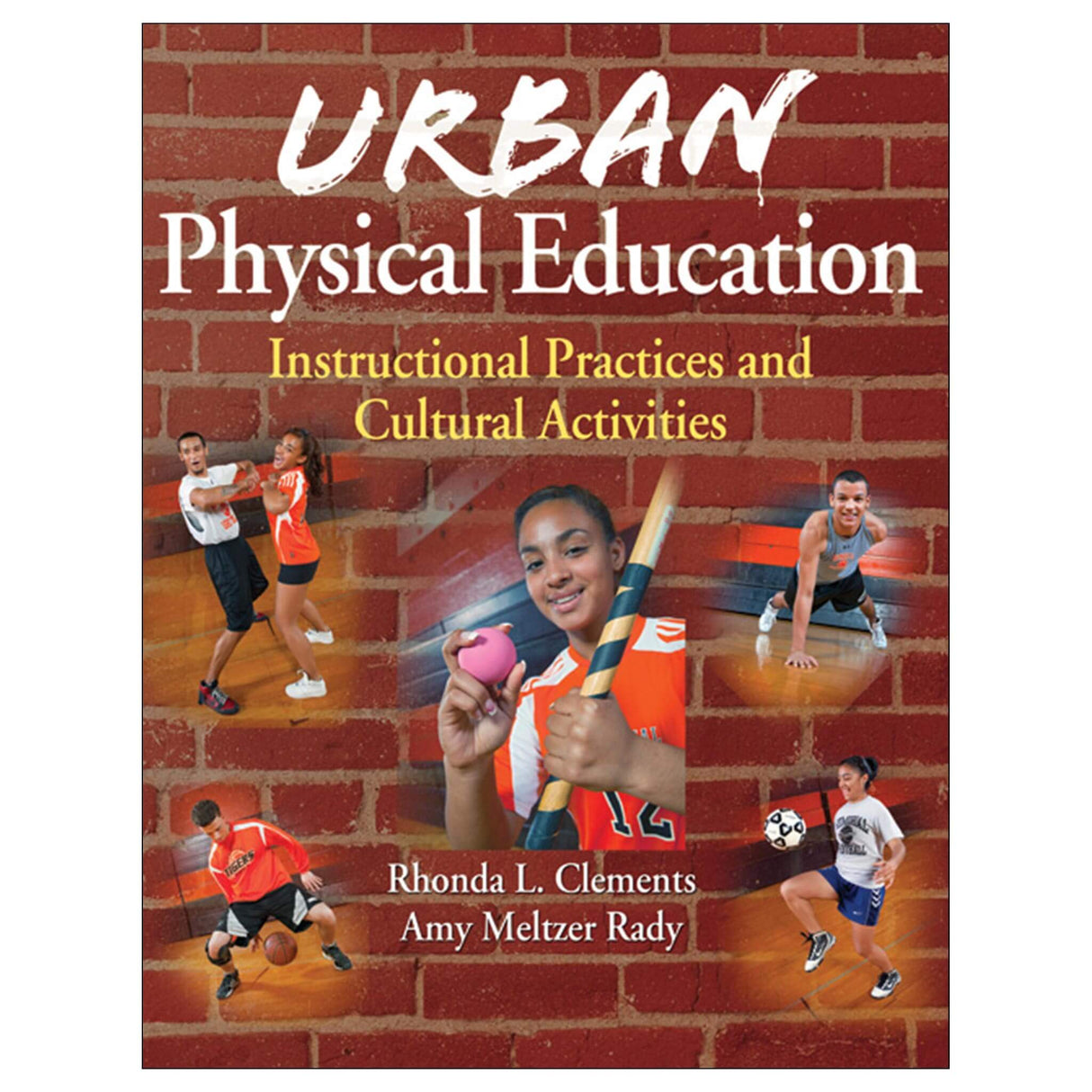Urban Physical Education PDF
Instructional Practices and Cultural Activities
Author: Rhonda L. Clements, Amy Meltzer Rady
$37.95 CAD
Access Duration: 10 Years
Urban Physical Education targets the teaching circumstances and conditions of urban schools with innovative instructional practices and culturally diverse and contemporary activities. You’ll find games and modified sports from around the world as well as sport and performance activities such as urban dances, parkour, urban golf, freestyle basketball, and fitness routines.
Each of the 40 activities includes a brief description, a simplified teaching process, key instructional points, alignment with NASPE national standards, and a basic closure activity. An activity finder makes it easy to find activities to fit in your curriculum, and ready-made rubrics help you assess readiness of preservice teachers, partner and group interactions, and lesson effectiveness.
Authors Clements and Rady combine their expertise and experience to help you better understand urban school environments and become a more effective leader, instructor, and mentor to the diverse students in your school. More than an activity book, Urban Physical Education identifies the common challenges facing today’s urban physical education teachers and presents culturally responsive instructional practices developed by experienced teachers working in urban schools.
Suggestions and tools in the book will help you improve your teaching demeanor, respond to behavioral problems, implement protocols for large classes, and address the needs of English language learners. With Urban Physical Education, you’ll learn how to generate a new level of student enthusiasm and participation; develop and reinforce effective teaching practices; and enhance your existing curriculum with innovative, contemporary, and culturally diverse activities for middle and high school students.
Part One: Considerations for Physical Education Teachers in Urban Settings
Chapter 1. Culturally Responsive Teaching Practices
Practice 1: Recognize Cultural Characteristics Reflecting Race and Ethnicity
Practice 2: Become Acquainted with the Students’ Native Countries
Practice 3: Recognize Intercultural Differences in Gestures and Body Language
Practice 4: Address the Needs of English Language Learners
Practice 5: Use Nondiscriminatory Selection Techniques, International Skill Practice Formations, and Urban Ways to Start a Game
Practice 6: Enhance the Learning Environment with Themed Bulletin Boards and Greetings
Summary
Chapter 2. Urban Physical Education Teachers as Leaders
Examining One’s Teaching Demeanor
Responding to Life Skills Questions
Responding to Behaviors with PRIDE
Common Trigger Scenarios
Gangs in Urban Schools
Protocols for Teaching Large Classes
Summary
Part Two: Physical Education Activities for Urban Settings
Chapter 3. Culturally Diverse Activities and Challenges
African Bolo Ball
Egyptian Group Bowling
Fives
El Circulo Handball
Scottish Clock Golf
Chinese Soccer
Italian Fence or Palificata
Four Goals Futbal
Four-Team Rip Flag Challenge
Modified English Rounders
Finnish Baseball or Pesapallo
Modified German Fistball
Culturally Diverse Cooperative Challenges
Culturally Diverse Stretching and Exercise Challenges
Culturally Diverse Fitness Challenges
Culturally Diverse Race Challenges
Japanese Group Fitness Challenges
Japanese Team Rock, Paper, Scissors
Chapter 4. Physical Activities of Special Interest to Urban Settings
Freestyle Basketball Ball-Handling Skills
Street Basketball Tricks
Pickup Basketball
Hotshot Hoops
Urban Freestyle Soccer Skills
Urban Soccer
Urban Golf
Modified Ultimate Frisbee
Urban Workout
Inner-City Workout: Beat Down
Parkour
Ace, King, Queen, or Jack
One-Wall Handball
Ultimate Gaga
Blister
Square Four
Stickball
Three-Team Softball
Ultimate Keep Away
The Harlem Shake
Krumping
Chapter 5. Assessing Diversity Outcomes
Sample Rubric 1: Preparing Physical Education Candidates to Teach in Diverse Settings
Sample Rubric 2: Assessing Individual Interaction With a Partner or Peer
Sample Rubric 3: Assessing a Student’s Group Interactive Skills
Sample Rubric 4: Assessing the Extent to Which Objectives Have Been Achieved in a Class





